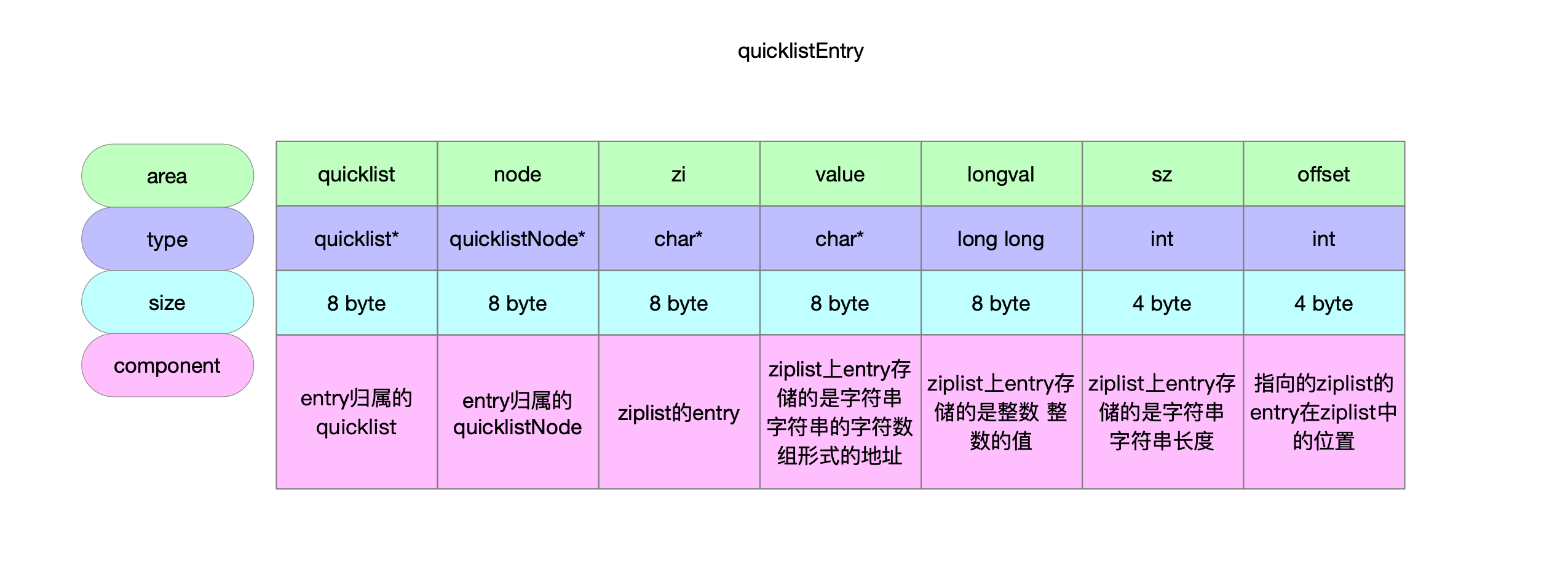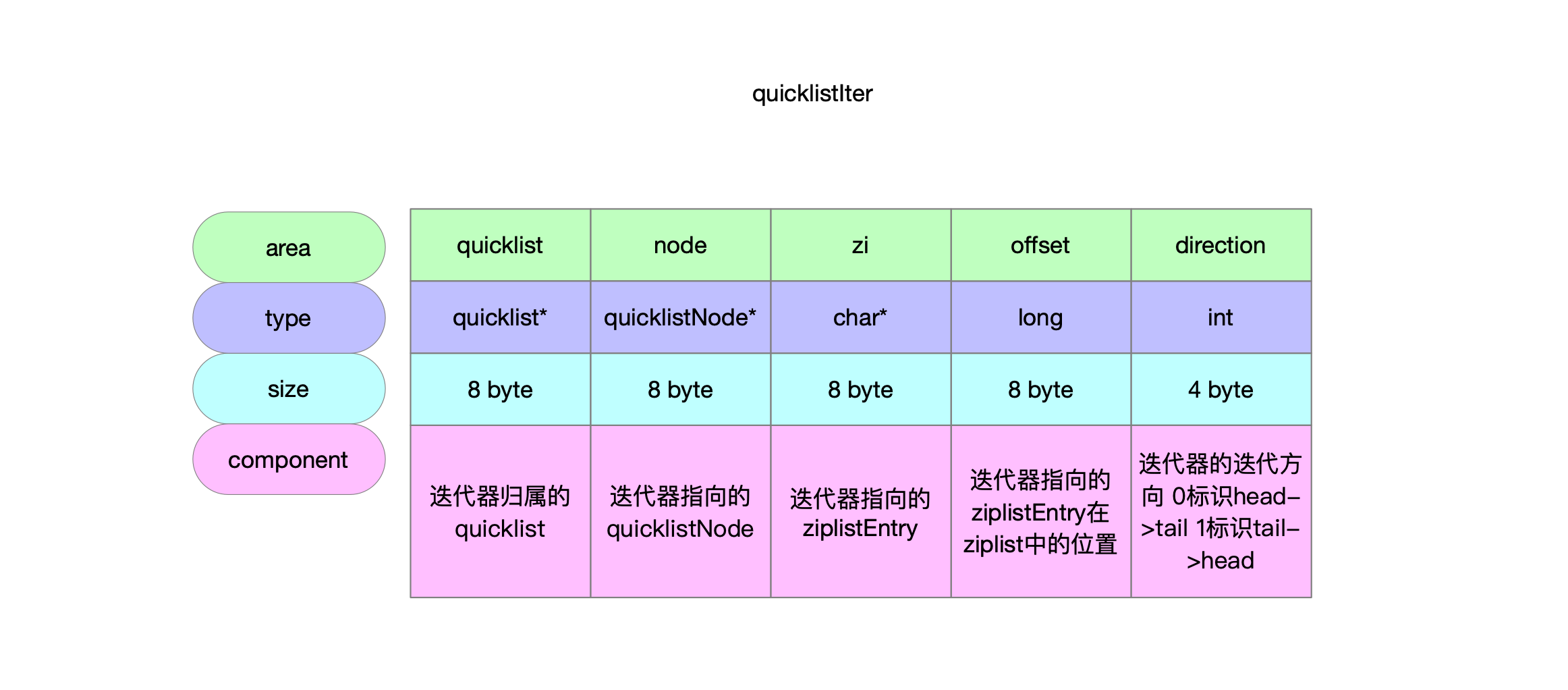Redis-0x0d-quicklist
数据类型的编码方式。
1 数据结构
1.1 链表节点quicklistNode
c
1 | |

1.2 链表quicklist
c
1 | |

1.3 链表数据节点quicklistEntry
c
1 | |

1.4 示意图

2 创建链表节点
c
1 | |
3 创建链表
3.1 默认参数
c
1 | |
3.2 指定参数
c
1 | |
4 quicklist字段赋值
c
1 | |
4.1 fill字段
4.1.1 字段赋值
c
1 | |
c
1 | |
4.1.2 配置详情
摘自redis.conf配置文件。
conf
1 | |
4.2 depth字段
4.2.1 字段赋值
c
1 | |
c
1 | |
4.2.2 配置详情
conf
1 | |
5 quicklist节点上ziplist容量检查
5.1 字节大小校验
c
1 | |
c
1 | |
5.2 校验fill字段阈值
c
1 | |
6 迭代器
6.1 数据结构
c
1 | |

6.2 创建迭代器
c
1 | |
6.3 指定开始位置的迭代器
c
1 | |
7 增
7.1 quicklist插入quicklistNode节点
7.1.1 任意位置
c
1 | |
7.2 头插
c
1 | |
7.3 尾插
c
1 | |
7.2 quicklist插入元素
7.2.1 头插
c
1 | |
7.2.2 尾插
c
1 | |
8 删
9 改
10 查
10.1 pop列表头或者列表尾
c
1 | |
c
1 | |
10.2 查找指定位置
c
1 | |
10.3 quicklist迭代器遍历
c
1 | |
Redis-0x0d-quicklist
https://bannirui.github.io/2023/04/03/Redis-0x0d-quicklist/